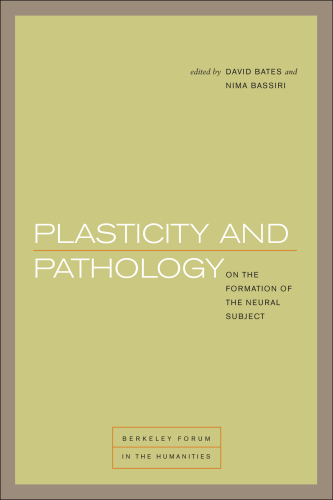پلاستیسیته و آسیب شناسی: در مورد شکل گیری موضوع عصبی ۲۰۱۶
Plasticity and Pathology: On the Formation of the Neural Subject 2016
دانلود کتاب پلاستیسیته و آسیب شناسی: در مورد شکل گیری موضوع عصبی ۲۰۱۶ (Plasticity and Pathology: On the Formation of the Neural Subject 2016) با لینک مستقیم و فرمت pdf (پی دی اف)
| نویسنده |
David Bates |
|---|
| تعداد صفحهها |
351 |
|---|---|
| نوع فایل |
epub |
| حجم |
10 Mb |
| سال انتشار |
2016 |
89,000 تومان
معرفی کتاب پلاستیسیته و آسیب شناسی: در مورد شکل گیری موضوع عصبی ۲۰۱۶
با ظهور علم شناختی و انقلاب در علوم اعصاب، اکنون رایج است که فرض کنیم مطالعه انسان – موضوع تفکر، احساس و بازنمایی – در نهایت مطالعه مغز انسان است. هم در اروپا و هم در ایالات متحده، تحقیقات گسترده ای با بودجه دولتی بر روی نقشه برداری از مغز در تمام پیچیدگی های جذاب آن متمرکز شده است. استعاره های مورد استفاده عمدتاً فنی هستند: نمودار سیم کشی اتصال سیناپسی منجر به درک بهتر رفتار انسان و شاید بینش هایی در مورد تجزیه شخصیت انسان با بیماری های مغزی مانند آلزایمر شود. در کنار این گفتمان فن آوری مغز به عنوان مرکز سوبژکتیویته انسانی، دیدگاه دیگری را می یابیم که بر انعطاف پذیری اساسی آن تمرکز می کند – هم از نظر تکاملی و هم به عنوان پاسخی به آسیب هایی مانند سکته مغزی، تومورها یا زخم های گلوله.
این مجموعه مقالات گروه متنوعی از محققان را گرد هم می آورد تا چگونگی ظهور “موضوع عصبی” در قرن بیست و یکم را بررسی کنند. آنها با اتخاذ رویکردهای تاریخی و نظری، امکانات و محدودیت های درک علوم اعصاب از تجربه انسانی را بررسی می کنند. موضوعات شامل مطالعات برجسته در تاریخ علوم اعصاب، رابطه بین “بیماری های” عصبی و تکنولوژیکی، و تحلیل مفاهیم معاصر از انعطاف پذیری و آسیب شناسی در علوم اعصاب شناختی است. تمرکز حجم، بررسی انتقادی رابطه بین آسیب شناسی و پلاستیسیته است. از آنجایی که آسیب شناسی اغلب فرصتی برای سازماندهی مجدد و انطباق عصبی است، در تضاد با عملکرد “عادی” مغز نیست، بلکه به عنوان چیزی است که ارتباط نزدیکی با شیوه های بودن و درک ما دارد.
With the rise of cognitive science and the revolution in neuroscience, it is now commonplace to assume that the study of a human person--a thinking, feeling, acting subject--is ultimately the study of the human brain. In both Europe and the United States, massive state-funded research is focused on mapping the brain in all its remarkable complexity. The metaphors employed are largely technological: A wiring diagram of synaptic connectivity will lead to a better understanding of human behavior and perhaps insights into the breakdown of human personhood with diseases of the brain such as Alzheimer's. Alongside this technologized discourse of the brain as locus of human subjectivity we find another perspective, one that emphasizes its essential plasticity--in both the developmental sense and as a response to traumas such as strokes, tumors, or gunshot wounds.
This collection of essays brings together a diverse range of scholars to investigate how the "neural subject" of the twenty-first century came to be. Taking approaches both historical and theoretical, they probe the possibilities and limits of neuroscientific understandings of human experience. Topics include landmark studies in the history of neuroscience, the relationship between neural and technological "pathologies," and analyses of contemporary concepts of plasticity and pathology in cognitive neuroscience. Central to the volume is a critical examination of the relationship between pathology and plasticity. Because pathology is often the occasion for neural reorganization and adaptation, it exists not in opposition to the brain's "normal" operation but instead as something intimately connected to our ways of being and understanding.



